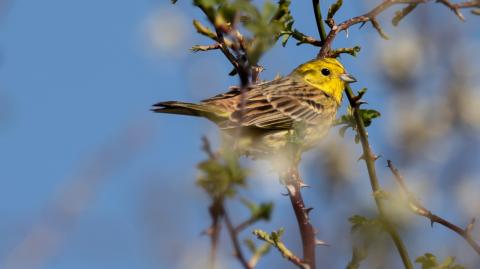The Welsh Farmland Bird Initiative: Overwinter feeding of farmland birds to reverse biodiversity decline on productive pasture-based farms
There are many opportunities within pasture based farming that could help reverse the decline of farmland birds. In this two and a half year project one dairy farmer in Denbighshire and one sheep farmer in Conwy have been working closely with The Game and Wildlife Conservation Trust (GWCT) to investigate whether providing over winter habitat and over winter supplementary feeding can help boost farmland bird numbers.
At the beginning of the project careful consideration was given as to which cover crop to use on each farm and also their placement. These cover crops were designed to meet the needs of each farm, and also deliver over-winter food for seed eating farmland birds and provide cover from predators and adverse weather for a host of other wildlife. Bird feeding stations were set up across both farms which provided supplementary feed for the birds over the winter. The supplementary feeding stations were set up on the hope to decrease winter mortality and ensure a higher adult breeding population in the following spring. Surveys were then taken throughout the project to record bird and also pollinator numbers to analyse the effects of these approaches.
These techniques have been scientifically proven to boost farmland bird numbers elsewhere in the UK and this project aimed to demonstrate this outcome on two pasture-based farms in Wales. The hope of the project was to show that these simple measures can be effective methods of bird conservation whilst also being able to fit in with commercial livestock farming. With the potential move towards subsidised support to deliver public goods on farms this project aimed to give an example of how it can be delivered at a farm scale.
Project Outcomes:
- Breeding bird surveys showed that the crops and feed did have a potential to make a difference to the populations on the farms themselves on the farms.
- In the life of this project, the number of breeding bird doubled in numbers.

